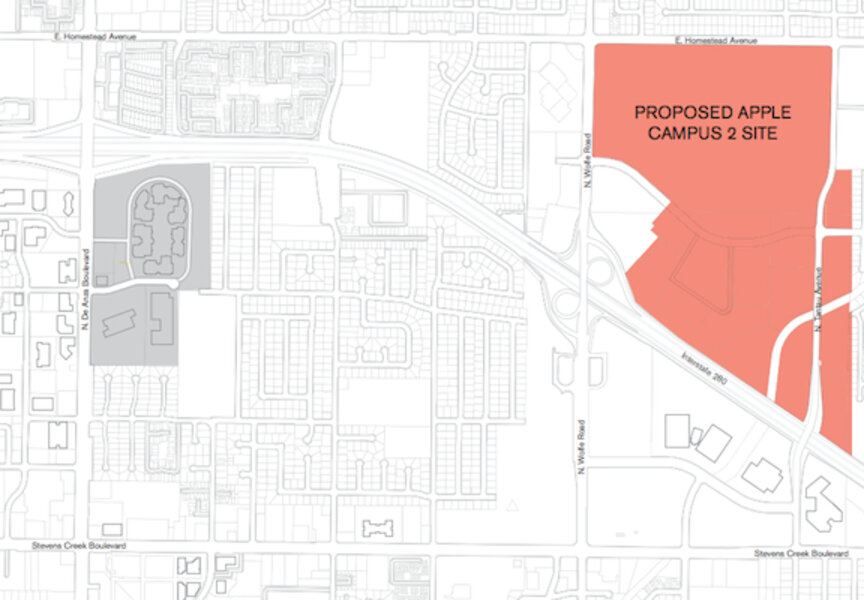Apple 'spaceship' campus touted as economic boon for Cupertino
Loading...
In 2016, if all goes well, Apple will unveil a sparkling new campus in the California city of Cupertino.
In the meantime, as the tech company works with the city government to finalize the plans, it has released – via real estate advisory firm Keyser Marston Associates – a hefty report on the financial benefits California would reap from the development.
Among those benefits, according to Keyser Marston: a major spike in customers for local businesses, an additional $32 million in revenue from local property taxes, and an influx of 12,000 wealthy employees in an already wealthy neighborhood.
"With the completion of Apple Campus 2, Apple salaries in Cupertino are expected to approximate $2.9 billion, with up to $1.8 billion accruing to employees who reside within Santa Clara County," the report reads. "Including indirect and induced impacts, Apple will generate $3.9 billion of employee compensation in Santa Clara County. Employee compensation translates directly into investment in local communities through expenditures on retail goods, housing, services, and entertainment."
As John Paczkowski of All Things D notes, Cupertino could still technically say no to the Apple proposal, although it's very unlikely. ("There is no chance we are saying no," Gilbert Wong, the mayor of Cupertino, said back in 2011.)
The new Apple offices will be four-stories tall, and built out of curved glass, giving the building the appearance of a spaceship. "There's not a straight piece of glass in this building," former Apple CEO Steve Jobs said before his death. "We've used our experience in building retail buildings all over the world. We know how to make the biggest pieces of glass for architectural use."
Of course, it isn't easy erecting a gigantic spaceship on the lip of the Santa Clara Valley, and already projections for the project circle around the $5 billion mark.
For more tech news, follow us on Twitter @venturenaut.







